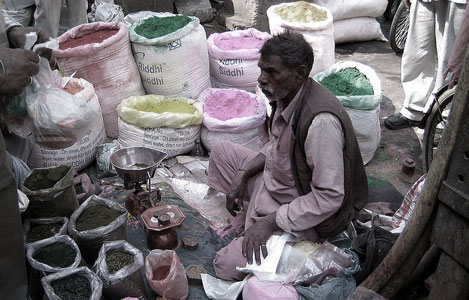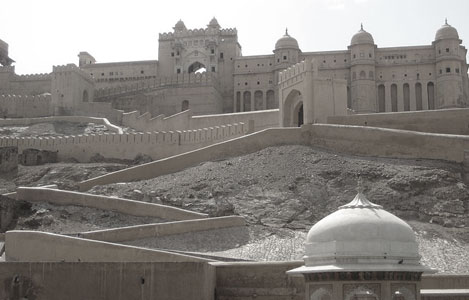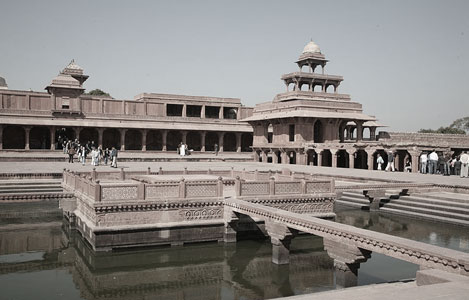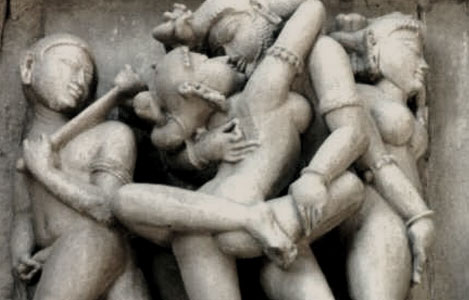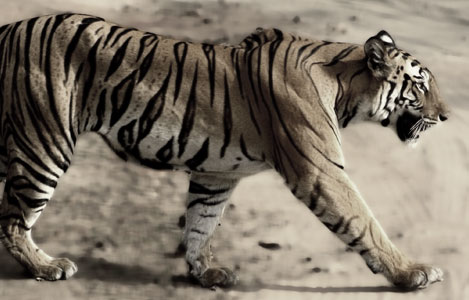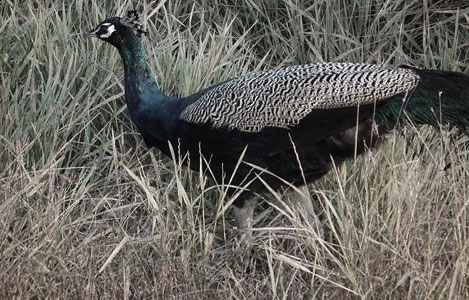Day 1 Delhi
You are met at the airport in Delhi and transferred to your hotel. The day includes a sightseeing tour of Sir Edward Lutyens’ New Delhi, the garden city built in 1911 by the British. We also visit the Birla Mandir (Lakshminarayan Temple), the President’s House, Humayun’s Tomb (the forerunner of the Taj Mahal), and India Gate.
Days 2 - 3 Jaipur
Known as ‘Pink City’, Jaipur was founded by Maharaja Jai Singh II (1693-1743), it is the capital of Rajasthan. It is a city of contrasts where camels and elephants wait at the traffic lights along with cars and scooters. The whole city was painted Pink when the Prince of Wales, Edward VII, visited Jaipur in 1876. Today, every home in the old city is obliged by law to maintain this façade. While in Jaipur we visit the Amber Fort, the former capital of the royal family of Jaipur, taking an elephant ride to the top. Another highlight is the City Palace, the former royal residence built in a blend of the Rajasthani and Mughal styles. The palace houses a museum with a superb collection of Rajasthani costumes and the armoury of the Mugals and Rajputs. We also visit the Jantar Mantar observatory and the Hawa Mahal.
Days 4 - 5 Agra
We continue our journey by deluxe coach to the Mughal splendor of Agra to visit the Taj Mahal and Red Fort. On the way we visit Fathepur Sikri, the ghost city built in honor of Saint Salim Chisti, who foretold the birth of 3 sons to Emperor Akbar. The Taj Mahal is a fine example of the fusion of many architectural styles and is one of the wonders of the modern world. It was built in 1652 by Emperor Shah Jahan. It took 22 years and 20,000 skilled artisans to complete. The Agra Fort lies across the river Jamuna. It was here that Aurangzeb, the third son of Shah Jahan, kept his father under house arrest. One can get a fantastic view of the Taj from the little octagonal tower in the Fort.
Days 6 - 7 Khajuraho
From Agra we take the Shatabdi Express train to Jhansi, giving you the chance to experience India by rail. From Jhansi we are met by a deluxe coach and continue on to Khajuraho, stopping in Orchha on the way. Orchha is the former capital of the region but is now just a village. We visit the old fort on an island in the Bewe River and a palace that was built for Jehangir – they are impressive in size and provide pleasant views of the countryside. After stretching our legs on this tour of Orchha we continue on to Khajuraho. Khajuraho is famous for its’ erotic temples. They are suberb examples of Indo-Aryan architecture but it’s the decorations with which they are so liberally embellished that have made Khajuraho so famous. The sculptors have shown many aspects of Indian life 1000 years ago, gods and goddesses, warriors and musicians. But two elements appear over and over again – women and sex. Khajuraho’s temples almost all date from a one century long burst of creative genius from 950 to 1050 AD. Almost as intriguing as the sheer beauty and size of the temples themselves is the question of whay and how they were built here, so far off any beaten path. Whatever the reason, this very remoteness must have prevented the temples from being destroyed by Muslim invaders.
Days 8 - 9 Bandhavgarh
Our tour now takes a “wild” turn as we continue by coach to Bandhavgarh National Park, stopping in Satna along the way. Bandhavgarh is one of the most recently declared reserves under India’s most successful conservation project – Project Tiger. The tiger population at Bandhavgarh is probably the highest in India. Formerly the hunting reserve of the princely state of Rewa, it was in this area that the first white tigers were discovered in the wild. The terrain consists of great rocky hills rising sharply from the swampy and densely forested valley. The highest of these hills is crowned by the 2000 year old Bandhavgarh fort, rising almost 2500 feet above sea level. The valleys around bottom out into swampy meadows – ideal for wildlife viewing on elephant back or from jeeps. We stay in a jungle lodge and delve into the jungle for wildlife viewing by jeep safari and on elephant back. Bandhavgarh also has scattered cave-like monasteries and an 11th century statue of Lord Vishnu sleeping on a snake bed.
Days 10 - 11 Kanha
We continue by deluxe coach to Kanha – our next wildlife destination. Kanha National Park stretches over bamboo forests, grasslands and streams – a very different type of terrain than the dense jungle of Bandhavgarh. The park is the sole habitat of the rare hardground barasingha. It is one of the most well-maintained National Parks in Asia and is a major attraction for wildlife buffs from all over the world. Kanha boasts about 22 species of mammal. Some of the park inhabitants are gaur, sambar, chausingha, antelope, the sloth bear, dhole, and the occasional panther. But for all the astonishing diversity of its wildlife, Kanha is best known as the habitat of the tiger. Sighting and photographing this magnificent animal from elephant back is an unforgettable experience. We spend our days here on safari with trained naturalists as well as tiger tracking on elephant back. Evenings are spent telling adventurous tales around the resort bonfire!
Days 12 - 14 Delhi
All adventures must come to an end! We travel by coach to Nagpur and catch our flight back to Delhi. Back in Delhi we visit Old Delhi, the ancient city built by Emperor Shah Jahan the builder of the famous Taj Mahal. We also explore Shahjahanabad’s Red Fort, and then take a bicycle rickshaw ride through the narrow lanes to the Jama Masjid. Our tour finishes with breakfast and transfer to the airport for international departure.






















